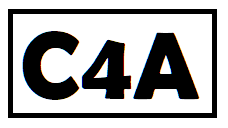Why Use Our Electric Conductivity Converter?
Converting electric conductivity values can be complex, especially when dealing with different measurement systems. Our electric conductivity converter simplifies this process by providing accurate and instant conversions between various units. Whether you’re a student, professional, or just someone who needs to make quick calculations, our tool is designed to meet your needs.
Key Features of Our Electric Conductivity Converter
- Wide Range of Units: Convert between Siemens per meter (S/m), Siemens per centimeter (S/cm), Mhos per centimeter (mho/cm), Microsiemens per centimeter (μS/cm), Millisiemens per centimeter (mS/cm), Ohm per meter (Ω/m), and Ohm per centimeter (Ω/cm). Our comprehensive list of units ensures you have everything you need for any conversion task.
- Instant Results: Get immediate conversion results as you type, making it easy to work with precise measurements. No more waiting for calculations; our tool provides real-time feedback.
- User-Friendly Interface: Our intuitive design ensures that anyone can use the converter effortlessly. Simple controls and clear labels make navigation a breeze.
Understanding the Units
Here is a brief explanation of each unit available in our electric conductivity converter:
Siemens per Meter (S/m)
The Siemens per meter is the SI derived unit of electric conductivity. It is defined as the reciprocal of resistivity in ohm meters (Ω·m).
Siemens per Centimeter (S/cm)
The Siemens per centimeter is a unit of electric conductivity. It is equivalent to 100 Siemens per meter (S/m).
Mhos per Centimeter (mho/cm)
The Mho per centimeter is an older unit of electric conductivity, equivalent to Siemens per centimeter (S/cm).
Microsiemens per Centimeter (μS/cm)
The Microsiemens per centimeter is a unit of electric conductivity, equivalent to 0.000001 Siemens per centimeter (S/cm).
Millisiemens per Centimeter (mS/cm)
The Millisiemens per centimeter is a unit of electric conductivity, equivalent to 0.001 Siemens per centimeter (S/cm).
Ohm per Meter (Ω/m)
The Ohm per meter is the reciprocal of Siemens per meter (S/m). It is a unit of resistivity, not conductivity.
Ohm per Centimeter (Ω/cm)
The Ohm per centimeter is the reciprocal of Siemens per centimeter (S/cm). It is a unit of resistivity, not conductivity.
How to Use the Electric Conductivity Converter
Using our electric conductivity converter is simple. Just follow these steps:
- Enter the value you wish to convert in the “From” field.
- Select the unit of the value you entered from the dropdown menu next to the “From” field.
- Choose the unit you want to convert to from the dropdown menu next to the “To” field.
- The converted value will appear automatically in the “To” field.
Additional Tips
If you need to switch the units, simply click the “Switch” button. This will swap the “From” and “To” units, allowing you to perform the conversion in reverse.
To start over, click the “Clear” button. This will reset all fields, making it easy to begin a new conversion.

For more detailed information and support, you can visit our Facebook page or contact us at office@calculator4all.com.
The Importance of Accurate Electric Conductivity Conversions
Accurate electric conductivity conversions are crucial in many fields, including electrical engineering, physics, and materials science. Using the wrong unit or making a calculation error can lead to significant mistakes and costly consequences. In electrical engineering projects, for example, a small error in conductivity can result in material selection errors. In physics, incorrect conversions can lead to inaccurate experimental results.
Our electric conductivity converter helps ensure precision by providing reliable and up-to-date conversion factors. Whether you’re working on a small project or a large-scale endeavor, our tool can help you achieve accuracy. Trust our converter to handle all your electric conductivity conversion needs with ease.
Benefits of Using Our Electric Conductivity Converter
There are numerous benefits to using our electric conductivity converter:
- Time-Saving: Save valuable time by avoiding manual calculations and potential errors.
- Accuracy: Ensure precision with reliable conversion factors.
- Accessibility: Use the converter from anywhere with an internet connection.
- Versatility: Handle a wide range of units, making it suitable for various applications.
Complex Explanation and Examples
Electric conductivity (\(\sigma\)) is a measure of a material’s ability to conduct electricity. It is the reciprocal of electrical resistivity (\(\rho\)), and the relationship is given by:
\[ \sigma = \frac{1}{\rho} \]Where:
- \(\sigma\) is the electric conductivity in Siemens per meter (S/m).
- \(\rho\) is the electrical resistivity in Ohm meters (Ω·m).
For example, if a material has a resistivity of \(2 \, \Omega \cdot \text{m}\), its conductivity would be:
\[ \sigma = \frac{1}{2} = 0.5 \, \text{S/m} \]Converting between different units of conductivity involves understanding the relationships between them. Here are some examples:
Example 1: Converting Siemens per Meter (S/m) to Siemens per Centimeter (S/cm)
Since 1 meter = 100 centimeters, we have:
\[ 1 \, \text{S/m} = \frac{1}{100} \, \text{S/cm} = 0.01 \, \text{S/cm} \]Therefore, to convert from S/m to S/cm, multiply by 0.01.
Example 2: Converting Microsiemens per Centimeter (μS/cm) to Millisiemens per Centimeter (mS/cm)
Since 1 mS/cm = 1000 μS/cm, we have:
\[ 1 \, \mu\text{S/cm} = \frac{1}{1000} \, \text{mS/cm} = 0.001 \, \text{mS/cm} \]Therefore, to convert from μS/cm to mS/cm, divide by 1000.
Real-World Applications
Our electric conductivity converter has practical applications in many real-world scenarios:
- Electrical Engineering: Precise conductivity measurements are essential in designing and selecting materials for electrical components.
- Physics: Physicists rely on accurate conductivity measurements for experiments and theoretical models.
- Materials Science: Material scientists need accurate conductivity data for developing new materials and assessing existing ones.
- Chemistry: Chemists use conductivity measurements to analyze solutions and electrolytes.
Conclusion
Converting electric conductivity values doesn’t have to be difficult. With our electric conductivity converter, you can easily switch between various units and obtain accurate results every time. Try it out today and experience the convenience of precise measurements. Whether you’re a professional or just someone who needs to make quick calculations, our tool is here to help.
